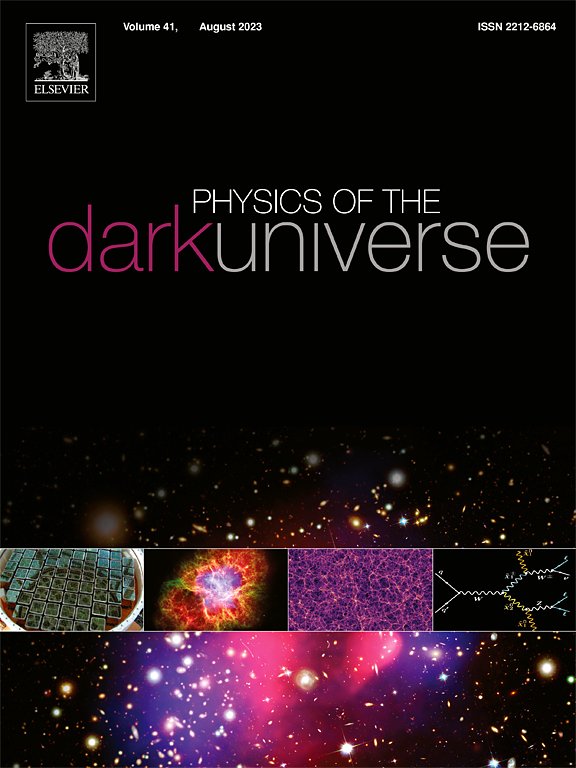Exploring the viability of f(Q,T) gravity: Constraining parameters with cosmological observations
IF 6.4
2区 物理与天体物理
Q1 ASTRONOMY & ASTROPHYSICS
引用次数: 0
Abstract
In this paper, we explore the model of gravity, an extension of symmetric teleparallel gravity where the nonmetricity scalar is non-minimally coupled to the trace of the energy–momentum tensor . To ensure general covariance and theoretical consistency, we adopt the covariant formulation of gravity, which allows a coordinate-independent treatment of the field equations and facilitates the correct identification of effective energy–momentum components. The model is developed as an alternative to the standard CDM cosmological model and is analyzed using Cosmic Chronometer and Pantheon supernovae datasets. Through Markov Chain Monte Carlo analysis, we constrain the model parameters , , and , and compare the performance of the model with CDM by evaluating statistical measures such as chi-square, Akaike information criterion (AIC), and Bayesian information criterion (BIC). The results show that the model effectively mimics CDM while offering an alternative explanation based on modified gravity. We also examine cosmographic parameters like the deceleration parameter, confirming the transition of the Universe from deceleration to acceleration, and the violation of the strong energy condition, which aligns with observed late-time cosmic acceleration. Additionally, the model provides age estimates for the Universe that are consistent with current observations.
探索f(Q,T)引力的可行性:用宇宙学观测约束参数
本文探讨了f(Q,T)引力模型,f(Q,T)引力是对称远平行引力的一种扩展,其中非度量标量Q与能量-动量张量T的迹线非最小耦合,为了保证一般协方差和理论一致性,我们采用f(Q,T)引力的协变公式,允许对场方程进行坐标无关的处理,并有利于正确识别有效的能量-动量分量。该模型是作为标准ΛCDM宇宙学模型的替代方案而开发的,并使用Cosmic Chronometer和Pantheon+超新星数据集进行分析。通过马尔可夫链蒙特卡罗分析,对模型参数α、β和H0进行约束,并通过评价卡方、赤池信息准则(AIC)和贝叶斯信息准则(BIC)等统计度量,比较模型与ΛCDM的性能。结果表明,f(Q,T)模型有效地模拟了ΛCDM,同时提供了基于修正重力的替代解释。我们还检查了宇宙参数,如减速参数,证实了宇宙从减速到加速的转变,以及强能量条件的违反,这与观测到的晚时间宇宙加速度一致。此外,该模型还提供了与当前观测结果一致的宇宙年龄估计。
本文章由计算机程序翻译,如有差异,请以英文原文为准。
求助全文
约1分钟内获得全文
求助全文
来源期刊

Physics of the Dark Universe
ASTRONOMY & ASTROPHYSICS-
CiteScore
9.60
自引率
7.30%
发文量
118
审稿时长
61 days
期刊介绍:
Physics of the Dark Universe is an innovative online-only journal that offers rapid publication of peer-reviewed, original research articles considered of high scientific impact.
The journal is focused on the understanding of Dark Matter, Dark Energy, Early Universe, gravitational waves and neutrinos, covering all theoretical, experimental and phenomenological aspects.
 求助内容:
求助内容: 应助结果提醒方式:
应助结果提醒方式:


